Thuja folded: description, varieties, planting and care
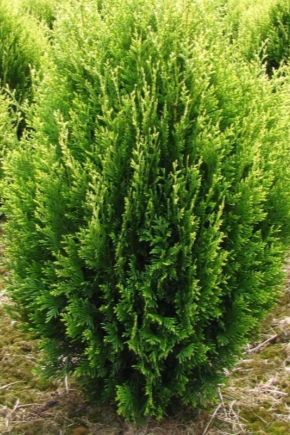
Thuja folded is a coniferous plant from the Cypress family that is often found in plantings. Due to its beautiful evergreen look, it is widely used in landscape design both in the form of single plantings and in the formation of living fences and alleys.

Description
East Asia and North America are considered the homeland of this coniferous plant. On the American continent, this species is listed as the highest mountainous. Thuja folded, or giant thuja, is a plant with a rather dense, dense crown, which is formed using branched shoots on the same planes. The crown shape is often pyramidal. Leaves-needles are bright green, very narrow, only occasionally reaching 1 mm in width.
As the plant grows, they are superimposed in layers on top of each other, like scales, and fit tightly to the shoots. This arrangement adds a glossy shine to their front surface. The opposite side has clearly visible white or light yellow stripes.
Under natural conditions, a tree can grow up to 60 m, with an average diameter of 2.5-3 m. The stem of the plant is fibrous. The folded, thickened bark has a brownish-red color, which is why sometimes it is also called “red cedar”.
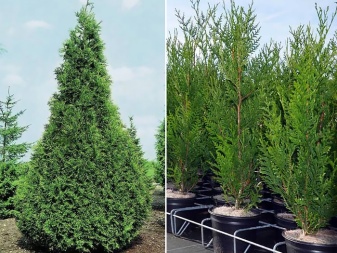
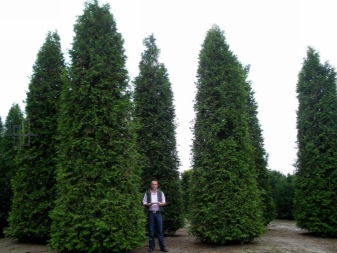
In its natural environment, thuja giant grows near water bodies, on slopes in a shady area. The tree belongs to long-livers, the life cycle of individual representatives reaches 800 years. Ornamental plants grown at home grow to about 13-15 m. Thuja fruits are oblong oval-shaped cones. In addition to the usual representatives of the folded thuja, there are also small, dwarf varieties that grow in the form of small cones.
The characteristics of folded thuja include:
- fairly rapid growth;
- the ability to grow even in poor soil;
- adaptability to growing in shaded areas;
- does not suffer from excessive soil moisture (when the coastal area is flooded);
- easy to propagate.
When the needles are rubbed, a pleasant, slightly pineapple aroma is released.
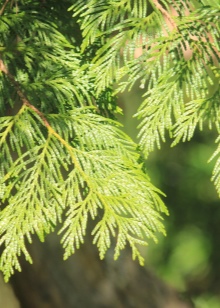
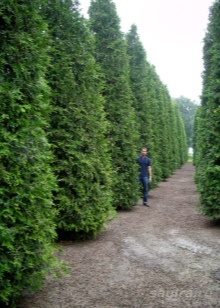
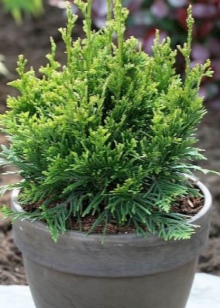
Varieties
Decorative giant thuja has several forms. All of them stand out for their interesting and attractive appearance. Classic varieties look great in frequent joint alleys. Dwarf varieties are more suitable for planting in rocky areas. Weeping forms are ideal for decorating ponds and lawns, but plants with colored needles look very beautiful in spectacular, contrasting compositions.
"VIPcord"
Belongs to dwarf varieties of folded thuja with a height of 1.5 m, although in nature it reaches 60 m. The plant has a spherical shape and bent branches. The needles are scaly and have pointed tips. In summer, the needles of "Vipcord" are green in color, and in winter they turn brownish.
In the content, the plant is completely unpretentious, has frost resistance, but in severe frosts it is worth insulating and building it, or buying a frame that would protect it from snow.
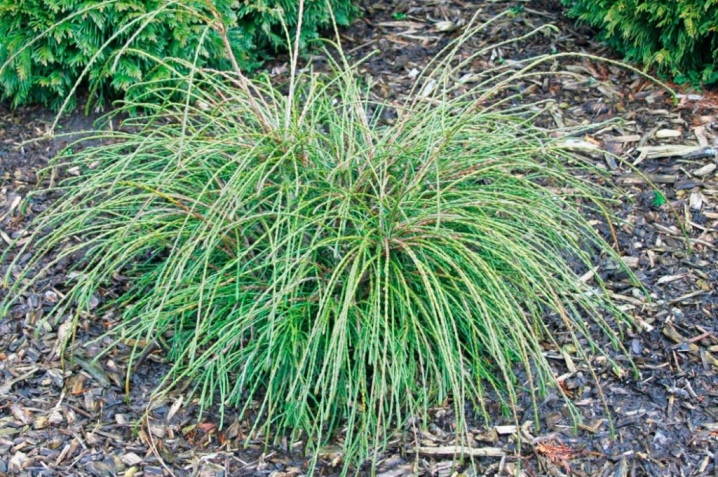
"Gelderland"
The shrub, characterized by a rather rapid growth, has an average height of 4 m. The cone-shaped crown is distinguished by its density and greenish overflow, and in winter it is bronze tone.
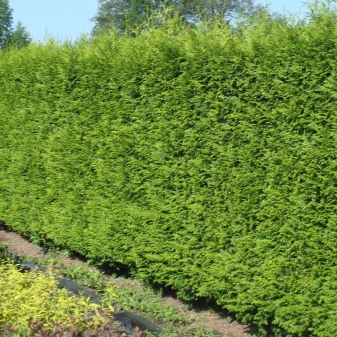

Forever Goldie
It is small in size, its height can be about 1.5 m.The crown shape is in the form of a lush cone, and the needles have a yellow-green tint.

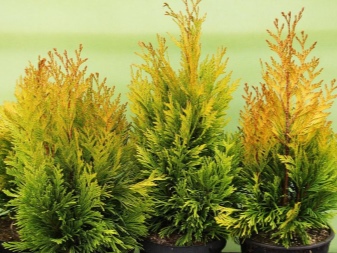
Zebrina
A variety of giant thuja, which stands out for its slow growth rate. The 25-year-old plant has a height of about 3 m. The crown of this shrub is undersized, but rather dense, the needles are characterized by a variegated color. Young shoots have pronounced creamy stripes.
Representatives of this variety equally poorly tolerate severe frosts and direct sunlight, but they need moisture. Under natural conditions, this species grows in forests and marshlands.
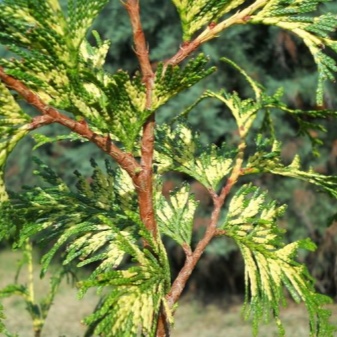

Zebrina extra gold
It has the shape of a cone with a double crown color. The base of the shoots is green and the edges are yellow. A tree grows up to 2 m.
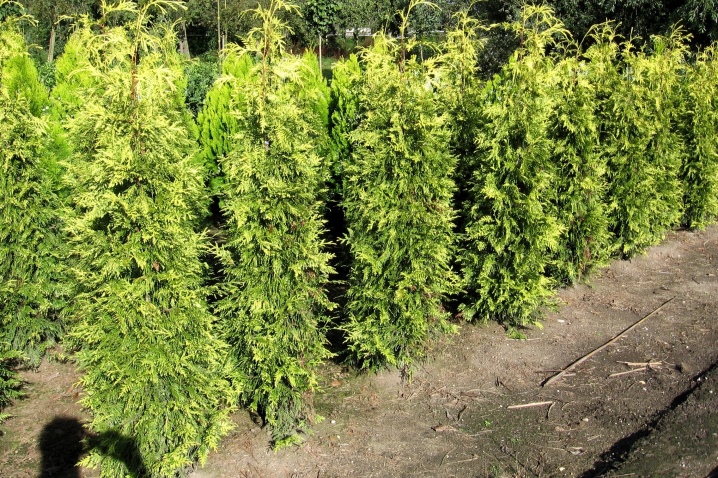
"Atrovirens"
It is characterized by a fast growth rate, with an average height of 4 m. The crown is distinguished by a glossy dark green color.
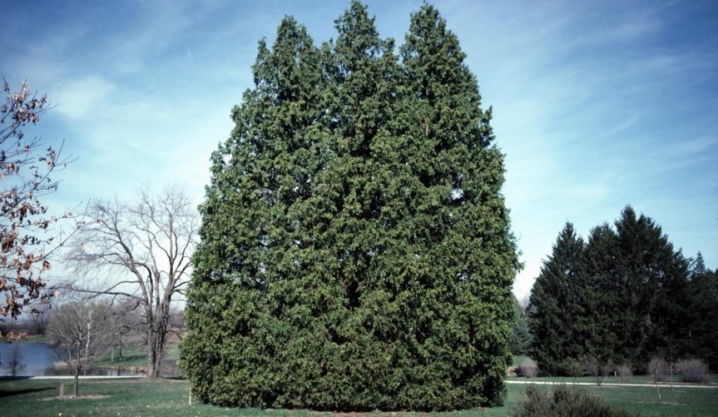
"Kornik"
A decorative variety of thuja with a pyramidal crown. The needles have a rich emerald green color, the tips of the needles have a golden tone. The growth of the plant is rather slow, a 10-year-old shrub grows up to 3 m.
Representatives of this variety differ in longevity, the length of the life cycle can reach 500 years. They are also characterized by frost resistance and strength, capable of withstanding strong gusts of wind. Fertile moist soil is best suited for this variety.
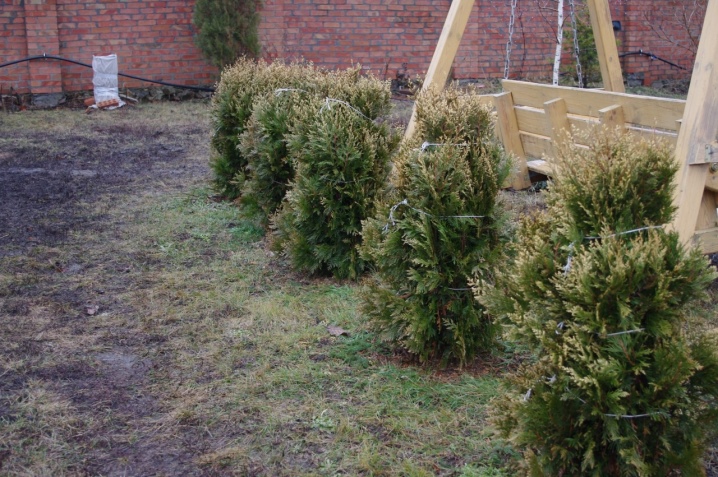
"Cancan"
Dwarf variety with a conical crown. The maximum can grow up to 1.5 m. Shoots are dense, glossy, with dark green needles. In spring, new growths appear with a golden tint. The growth of the plant is slow, but it is frost-resistant and undemanding to care for.
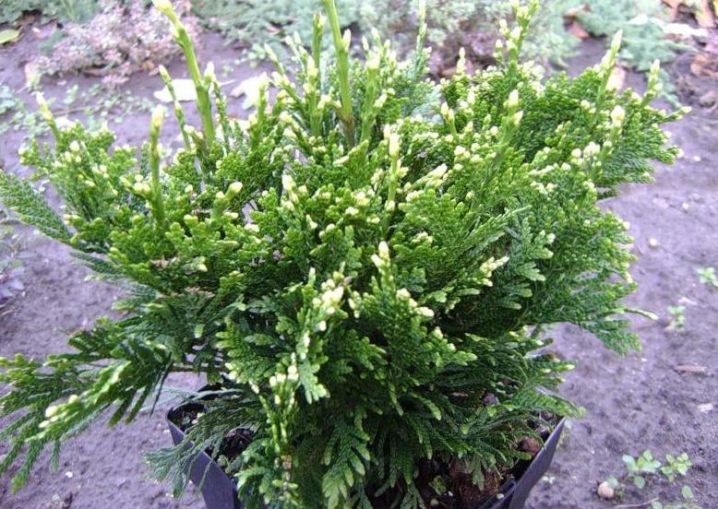
"Martin"
A decorative variety of thuja, characterized by a small height - only up to 1.5 m. The shoots are not very branched, growing parallel upwards. Old stems acquire a brownish tint, while young ones are bright green. The needles are scaly and close to the shoots.
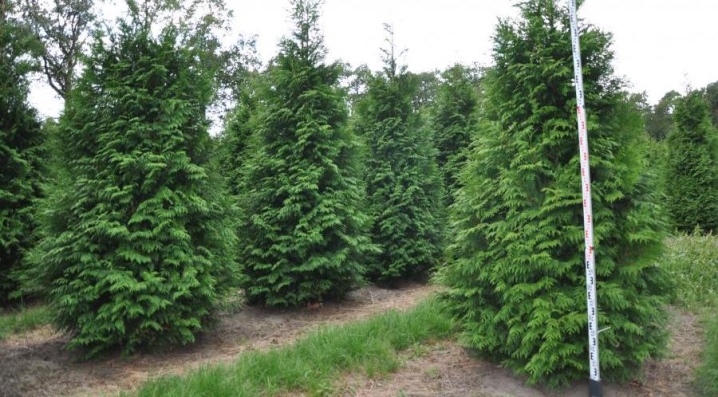
"Kagers beauty"
Belongs to the dwarf thuja varieties. The bush has a spreading crown of light green colors. The color of the needles depends on the lighting of the site: in a bright place it is of a brighter tone, and in the shade it becomes dark green.
The plant does not respond well to drought and needs moderate watering. This variety belongs to frost-resistant. On the site, they are used mainly for spectacular compositions with other plants.
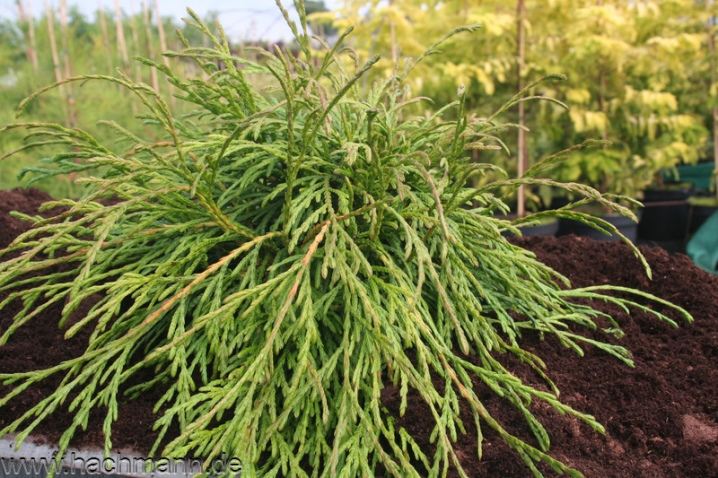
Planting and care rules
Thuja folded grows well in lighted or slightly shaded areas, it is desirable that the place was closed from the wind. The soil for planting is suitable from the following components:
- 2 parts of sod or leafy land;
- 1 part peat;
- 1 part sand.
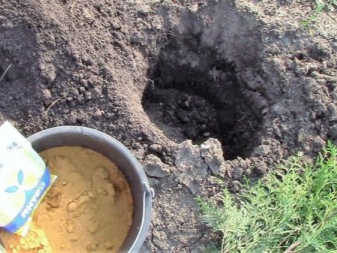
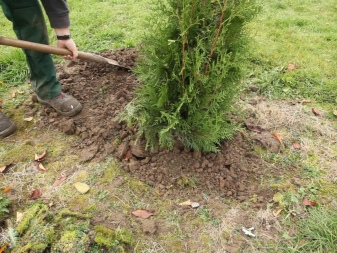
When planting a plant in the hole, you need to add 500 g of nitroammophoska. The depth should be 60-80 cm, taking into account the parameters of the thuja crown, as well as the earthen coma. It is necessary to plant in such a way that the root collar is located at the same level with the ground. It is also worth adding a drainage layer of 15-20 cm to the hole.
For the giant thuja, it does not matter on what soil to grow, it feels equally well on marshy, clay, peat or sandy soils. Plants need to be planted at a distance of 0.5 to 3 m from each other (depending on the size of an adult shrub).
The following spacing is recommended between rows:
- when disembarking in two rows - 0.5-0.7 m;
- in one row - 0.4-0.5 m.
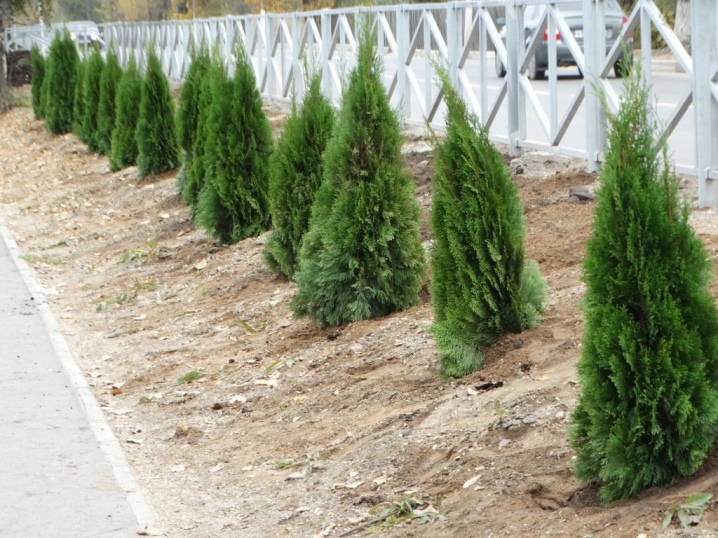
When planting the alley, it should be given a width of about 6-8 m, and the gap between the plants should be no more than 4 m.In the first month, the plant is moistened once a week (about 10 liters of water per bush), in dry and hot times the volume of liquid is increased and increase watering. Thuja folded loves moisture, with a lack of it, as well as in a too shaded place, the needles of the plant thins.
It is necessary to loosen the ground around the bush shallowly, since the plant has superficial roots.It is preferable to use mulching - a layer of 7 cm of peat or chips is quite enough.
It is recommended to fertilize biennial plants with the Kemira Universal complex. In the spring, prophylactic treatment with Bordeaux liquid is carried out. Dry shoots need to be removed regularly, they also do this in spring. The formation of the folded thuja crown is carried out as needed.
Young plants need to be insulated for the winter, while adults are quite frost-resistant. Although in winters that are too cold, they should also be covered. In the fall, it is better to build a frame to protect the trees from snow.
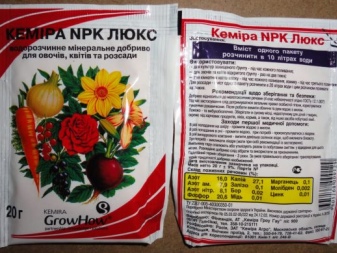
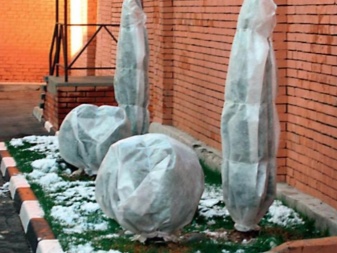
In nature, the giant thuja reproduces by seeds, and decorative forms - only by cuttings. They are taken from young, well-developed bushes. The cuttings take root rather quickly.
Due to its decorative appearance and variety of forms, folded thuja is often used in landscaping streets, forming alleys and hedges, and in combination with cypress, larch or spruce, it looks great in a variety of compositions.
The plant tolerates urban conditions very well, so it is ideal for landscaping in dusty cities, adding a bright note of freshness to a dull landscape.
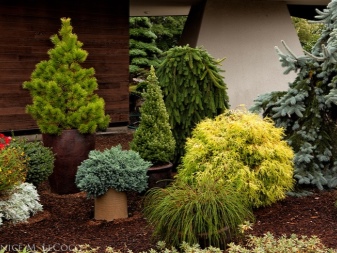
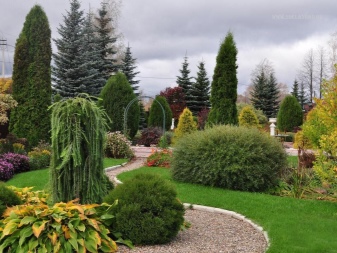
For the folded thuja of Excels, see the next video.



































































The comment was sent successfully.